Review for Tokyo Magnitude 8.0: Complete Collection
Introduction
Anime distribution is a world away from where it was ten or so years ago, before the online streaming revolution, and instantaneous access. We used to have to wait years for an anime to come to the West, for it to be noticed by fans and distribution companies, licensed, localised and eventually released. Now it’s just a matter of months between a show’s initial broadcast and it being brought out in Western markets. In a few select cases, we even get simultaneous home video releases with Japan. All this makes it strange to hear of a show that took four years from its initial broadcast to come the US home video market. It all becomes clear with the show’s title, Tokyo Magnitude 8.0. The anime was made in 2009, and it certainly grabbed an audience. It also scooped up a whole lot of awards in the process, as those in the industry recognised its realism, scientific authenticity, and its storytelling. However, around about the time that its US release would normally have been due, the 2011 Earthquake hit Japan. It’s totally understandable that its producers and creators would not be in the mood for signing off approvals and overseeing the minutiae of a foreign release, and neither would anyone else be in the mood to release such a title, which is why Tokyo Magnitude 8.0 finally came out in 2013 in the US.
Summer vacations can be frustrating for young girls like Mirai Onozawa, especially when her school friends are all going off on holiday with their parents, while her own parents will be so busy with their respective jobs that she has to spend the summer looking after her little brother Yuuki. And since she isn’t ‘doing anything’, she gets to take him to the robot exhibition in Odaiba. It’s while they are there that a magnitude 8.0 earthquake hits, with its epicentre in Tokyo Bay. The city suffers devastating destruction, and all of a sudden the children’s world is turned upside down. As the city co-ordinates a rescue and relief effort, they decide to make their way home on foot, trekking through a shattered and unrecognisable city. Fortunately they have the help of motorbike courier Mari Kusakabe, who helped rescue them from the exhibition centre.
11 episodes of Tokyo Magnitude 8.0 are presented across three discs from Maiden Japan. The show is also available on Region A locked Blu-ray. If you want Region B Blu-ray, Siren Visual released it in Australia.
Disc 1
1. Odaiba Sinks
2. Broken World
3. Burning Bridge
4. A Promise by the Three
Disc 2
5. School House of Lamentation
6. Abandoned Choice
7. Summer Sunset
8. A Pure White Morning
Disc 3
9. Farewell for Today
10. Sis, Listen...
11. Dear Yuuki...
Picture
Tokyo Magnitude 8.0 gets a 1.78:1 anamorphic NTSC transfer on these discs. Alas it’s not progressively encoded, and it’s not too great either. Pans and scrolls are prone to jerking, while I did notice a few moments where aliasing got out of hand. There’s also moiré on fine detail, particularly during the opening sequence. The smaller a screen you watch it on, the less these issues will annoy. Naturally you’d think that it makes the Blu-ray the preferable option, but that too is an interlaced presentation. It’s a shame, as Tokyo Magnitude 8.0 is a visually striking show. The character designs may be a little more simplistic than usual, but the sheer scale of the animation, the detail with which the city is recreated, and the effort put into making the effects of the disaster look realistic is simply stunning. There is a lot of production value up there on the screen.
Sound
You have the choice between DD 2.0 Stereo English and Japanese, with optional subtitles and a signs only track. I’m not too keen on the dub. Tokyo Magnitude 8.0 is an emotionally wrought piece, and there’s something essential lost with a dub that has to conform to lip flaps, remain faithful to the translation, and is recorded at the pace that Sentai usually works at. The original language audio works a lot better for me. The stereo too is effective in bringing across the show’s more strident moments, although you might wish for 5.1 when it comes to disaster sequences.
Extras
The discs present their content with static menus, and jacket pictures. Each episode is followed by a translated English credit scroll.
The extras are on disc 1, and comprise the textless credits (1 opening, 2 endings), and trailers for other Maiden Japan product, Vampire Princess Miyu, Love Love, Ray, Glass Maiden, Polyphonica Crimson S, and Himawari!
Disc 3 has the Tokyo Magnitude 8.0 Digest Version, this lasts 51:15, and lets you watch the entire story all over again, shorn of credit sequences, recaps and edited down into one manageable chunk. It’s fine if you don’t have time for the series. This is presented in Japanese and subtitled form only.
Conclusion
Tokyo Magnitude 8.0 is the Grave of the Fireflies, or Barefoot Gen for the modern day. It too looks at a battle against the odds to survive, through the eyes of the most innocent in society, the children. The difference being that there is no war currently ongoing on the Japanese mainland. Fortunately for the show, the nation’s geology provides ample opportunity for adversity, given its propensity for earthquakes. And given the realism and attention to detail in the story, you can guess why it dropped off the release radar in 2011. When real life imitates art, there’s less of a desire to visit the art gallery.
The story really is about the siblings, Mirai and Yuuki, and serves as a coming of age story, particular for the older sister Mirai. At the start of the story, she’s the usual, petulant teenager, a middle school girl living the typical life, envying her better off friends, wishing things would go her way in her life, resenting her parents for working all the time, and tolerating her kid brother with good nature at best, feeling saddled with him at worst. The start of her summer holiday doesn’t go well. Her family isn’t jetting off to sunnier climes, and she’s feeling used at home, a football in a petty argument between her parents, and then saddled with Yuuki on the first day of the holiday, forced to take him to a robotics exhibit on the other side of the city. With everyone seemingly against her, it gets to the point where she just wishes the world would fall apart. And then it does.
The earthquake hits, a powerful one centred in Tokyo Bay, and the world apparently turns upside down in an instant. Mirai’s first challenge is to find and rescue Yuuki from the shattered exhibition hall, and fortunately she has the help of Mari Kusakabe, a motorcycle courier who takes it upon herself to keep the children safe. And so begins their journey home, a matter of hours by train to get to Odaiba, a trek back that will last days through the ruined city. Mirai and Yuuki are heading home, not knowing if their parents are okay, while Mari is a single mother who’s looking to be reunited with her own daughter.
It’s a treacherous journey back, made even more so by aftershocks, and it’s through the children’s eyes that we see the unvarnished truth of what an earthquake causes, destruction, loss of life, and utter disruption for the survivors. We also see how people react to it, the selfishness of survival, or the surprising selflessness of strangers. Speaking of selfishness, Mirai suddenly has to face the responsibility that she has for her brother, a burden just a few hours previously, she now has to face the very real possibility that she’s the only family that Yuuki has left, and on top of that, the fear for their parents strains the relationship between brother and sister. But as they continue to journey, Mirai loses that petulant edge and starts engaging with the world.
One great aspect is that Mari acts as the children’s guardian at first, determined to get them home, and keeping a brave face to serve as a familiar constancy in this utterly changed world. But the closer Mari gets to her home and her own family, the more that mask begins to slip, to the point where she breaks down at the uncertainty of their fate. At this point it’s Mirai who has to serve as someone that Mari can rely on, and she takes on the burden of finding Mari’s family. It’s a really nice character development.
Alas, Tokyo Magnitude 8.0 slips for its final third. Around episode 8, it throws in one final personal tragedy in a show replete with tragedy for Mirai, Mari and Yuuki, and to my eyes it’s a step too far (although given the similarity to Grave of the Fireflies and Barefoot Gen, hardly unexpected). From this point, the show adds an element of mysticism and spirituality that sits oddly with its realistic tack. It also ups the melodrama and sentimentality beyond what the show really needs. Yes, it manages to elicit tears, and make the throat feel as if you’ve swallowed a bowling ball, but it’s obvious about it, and I have to admit that I resented the manipulation more than a little by the end.
It may hit a false note with its conclusion, but Tokyo Magnitude 8.0 has to be praised for its realism and sensitivity. The characterisations are honest, and what they go through has a greater degree of verisimilitude. It’s unlike the usual anime, where even the most realistic tend towards hyperbole and dramatic license. It also rings truer than the average disaster movie as well, which have been telling these sorts of stories for years. And once again, in my eternal search for anime unlike any other, Tokyo Magnitude 8.0 is a prime example of originality.
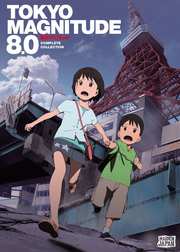
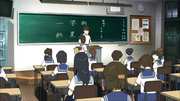



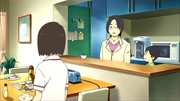
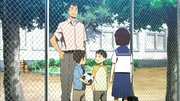

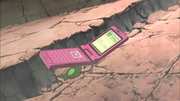

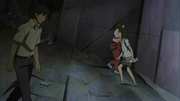


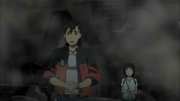
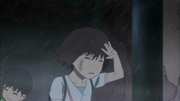
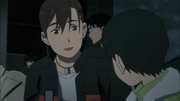
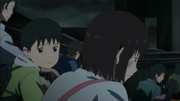

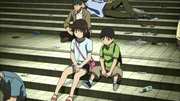
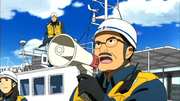

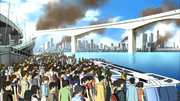

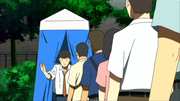
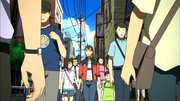




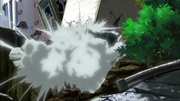
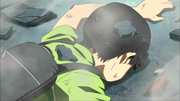














































Your Opinions and Comments
Be the first to post a comment!